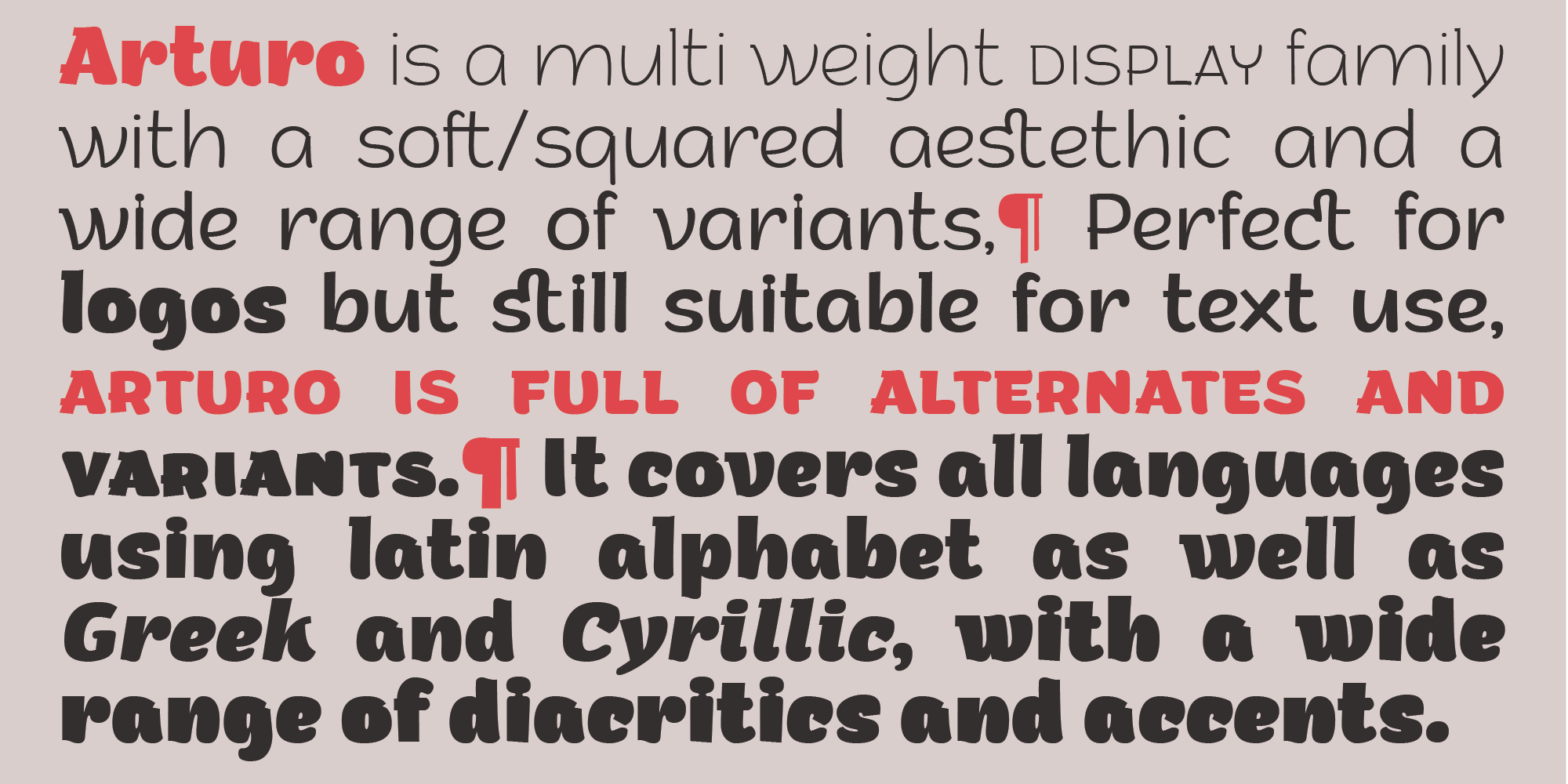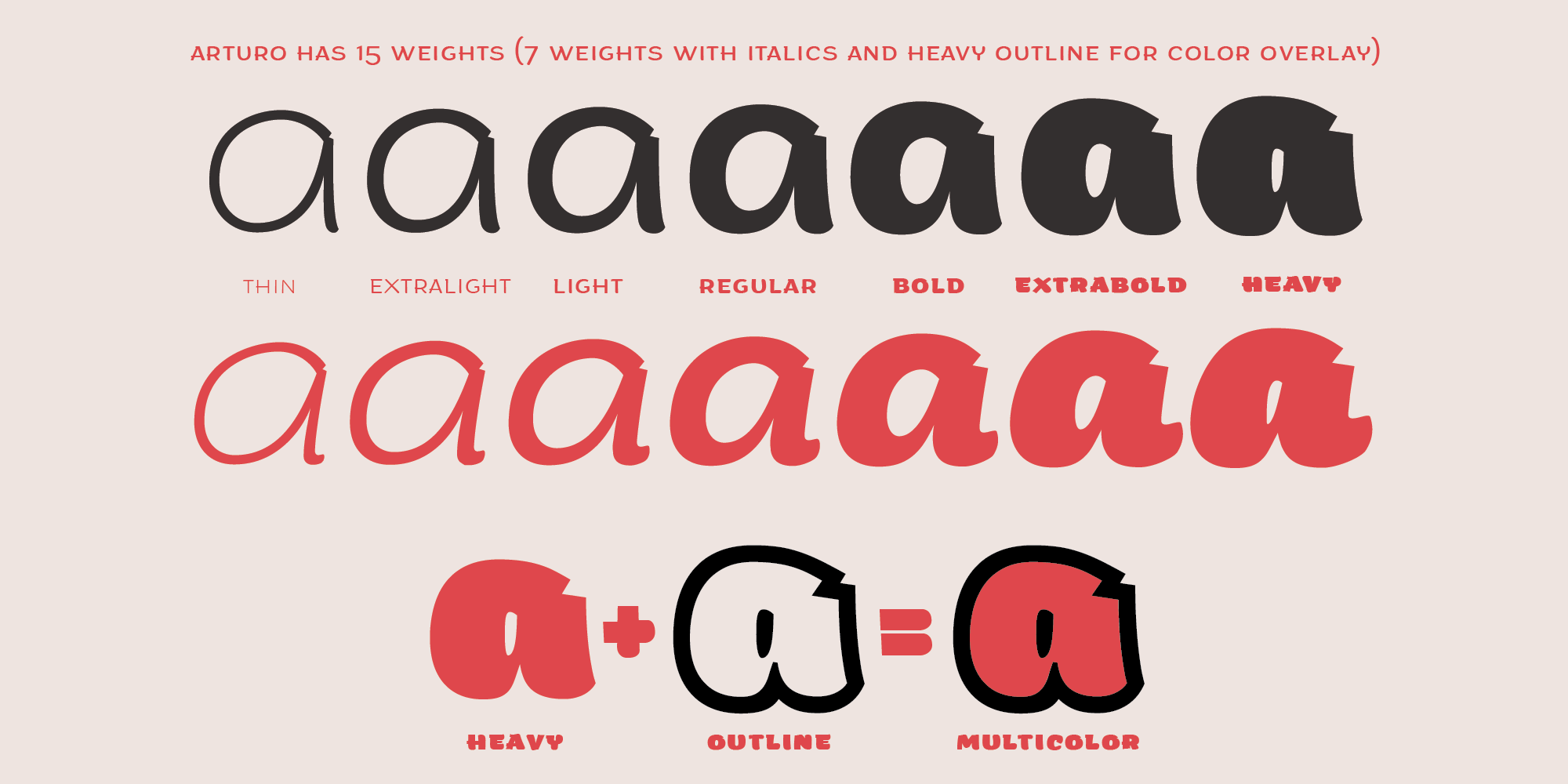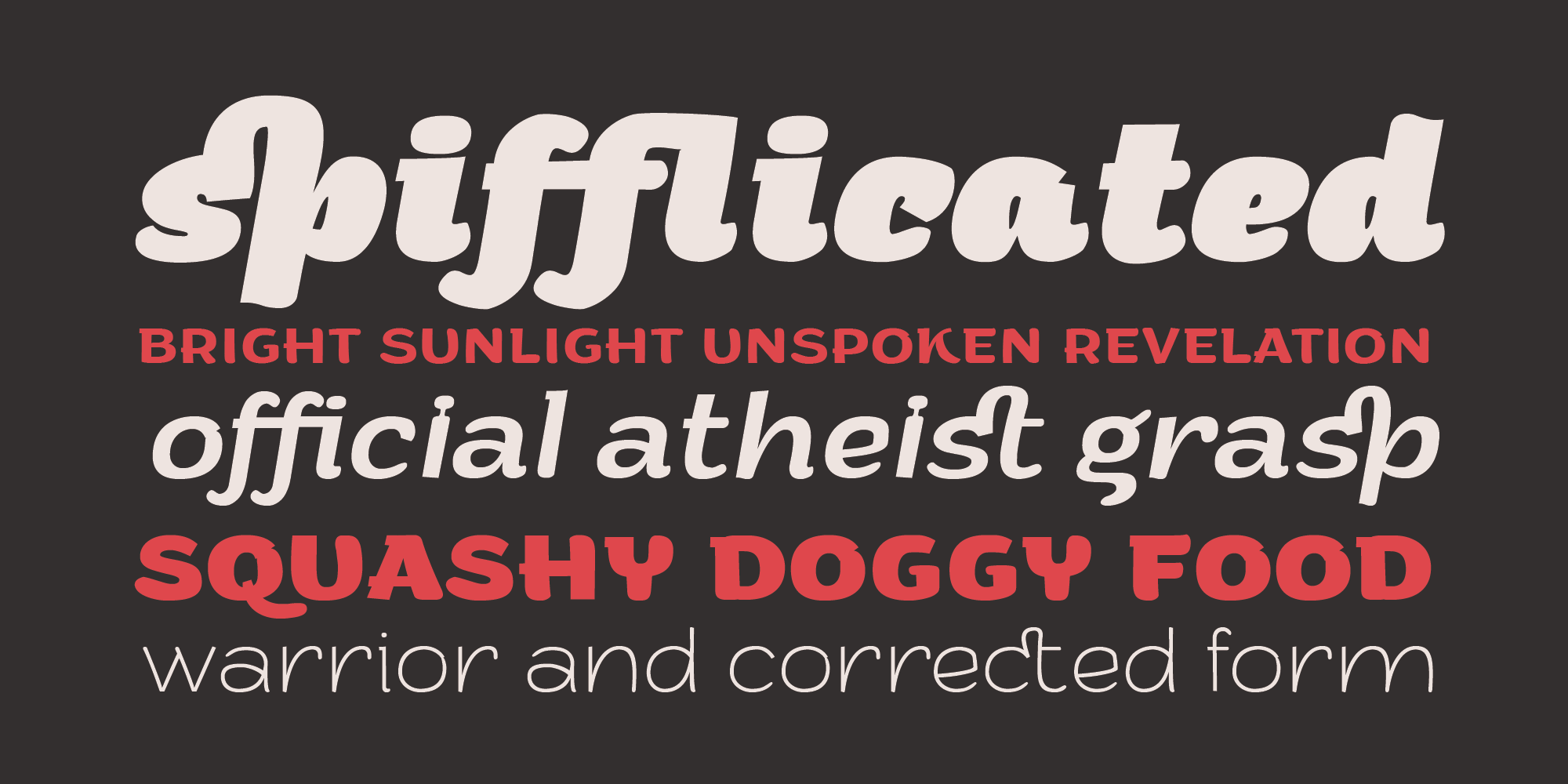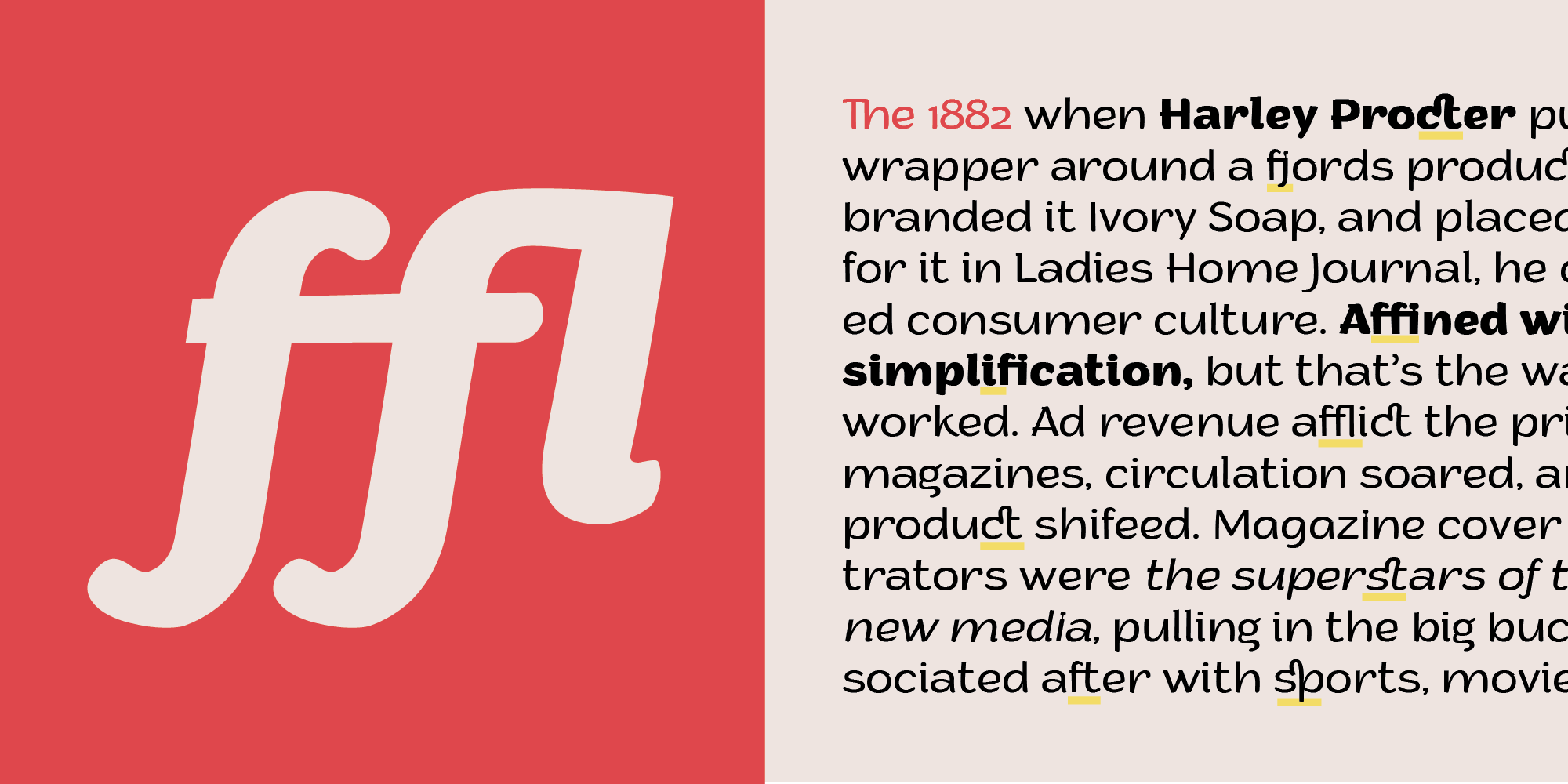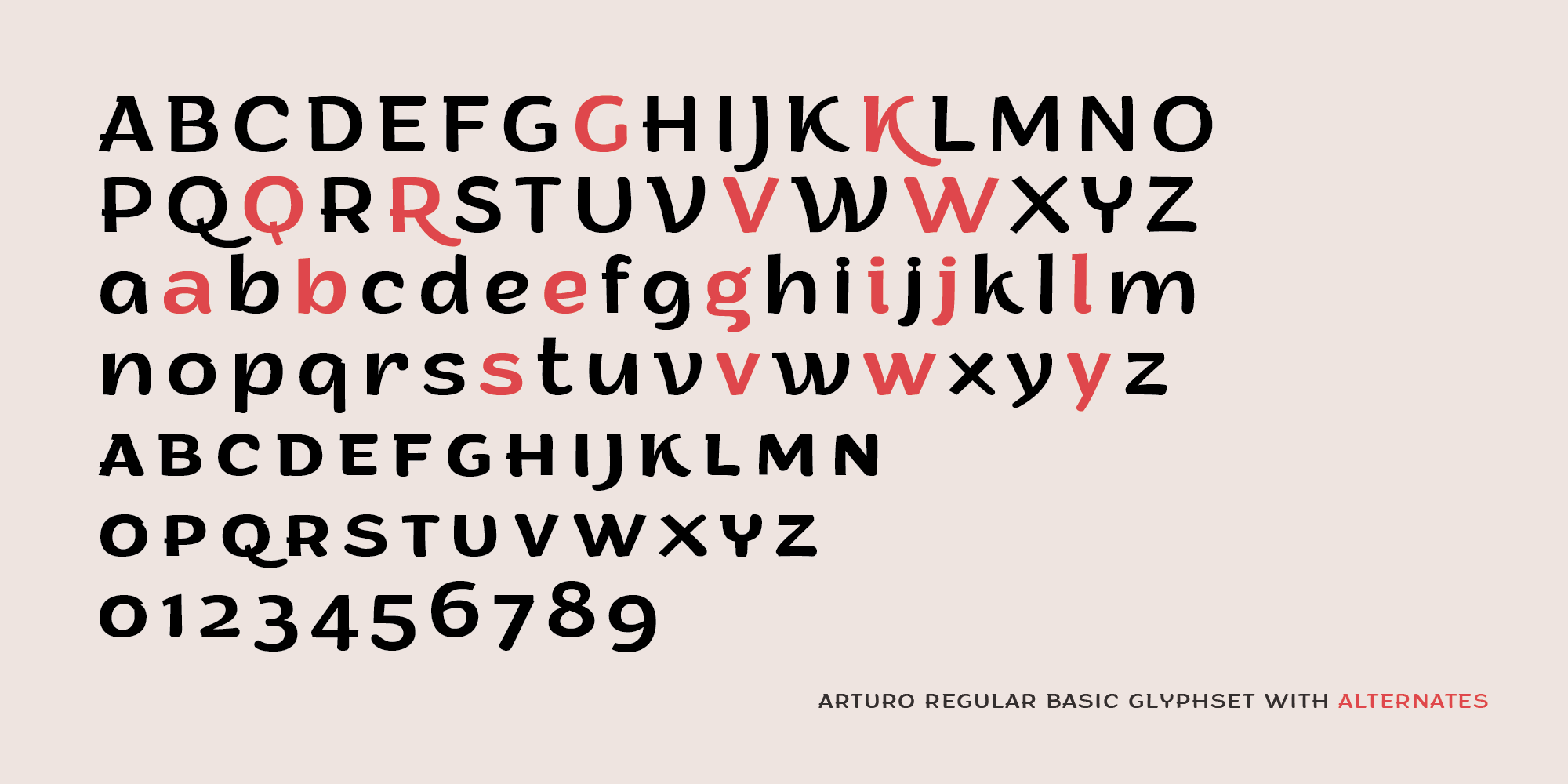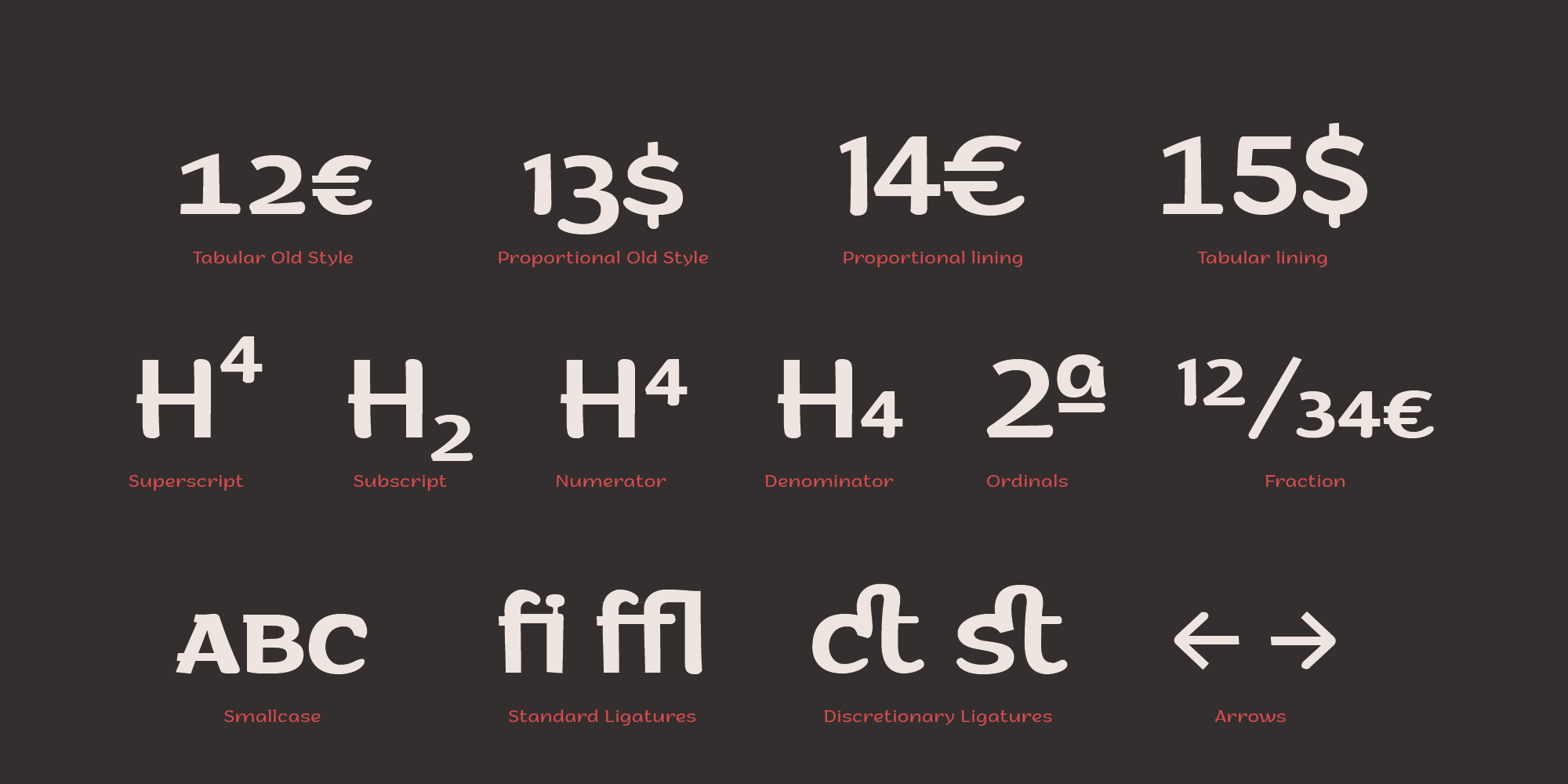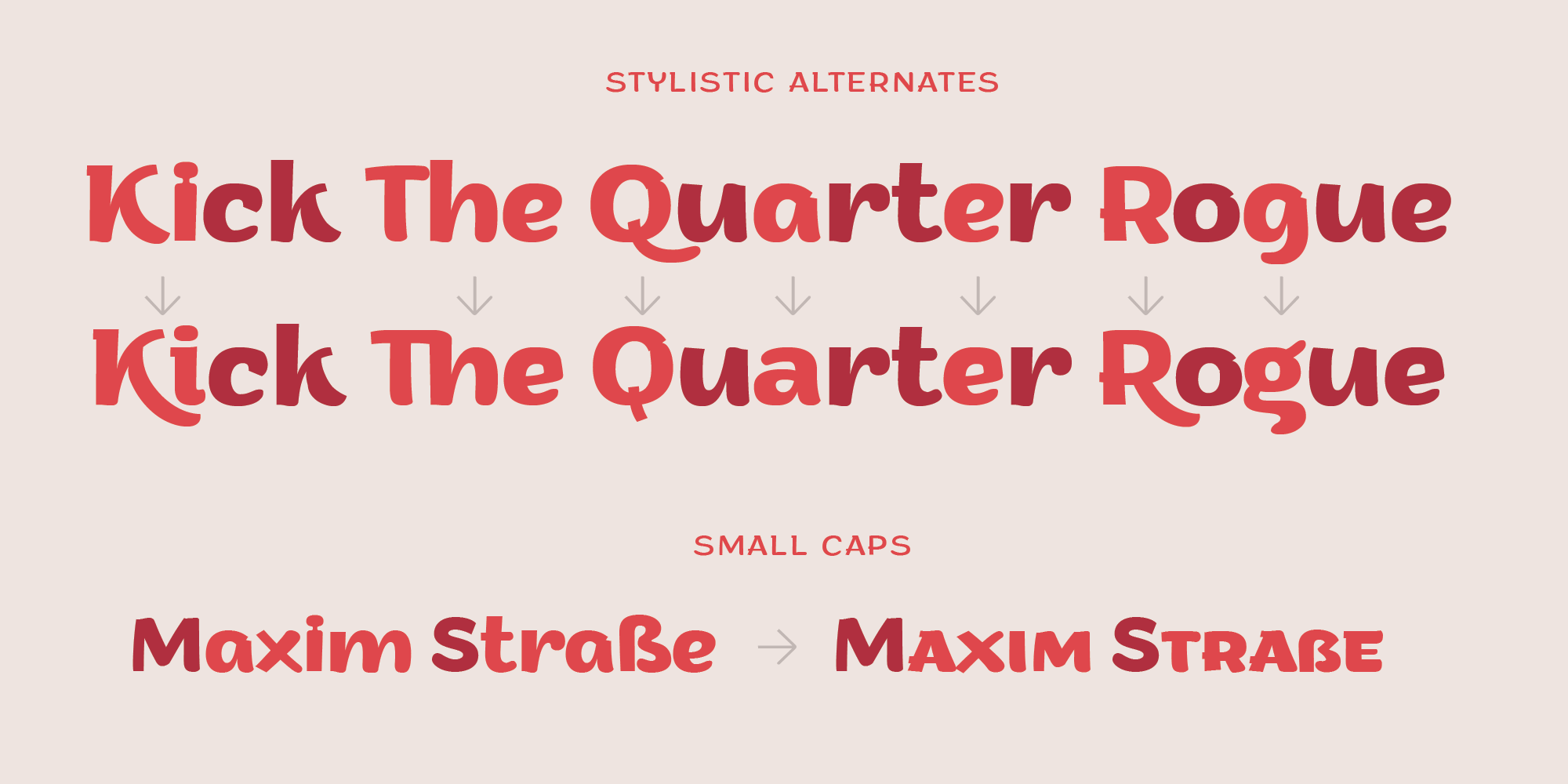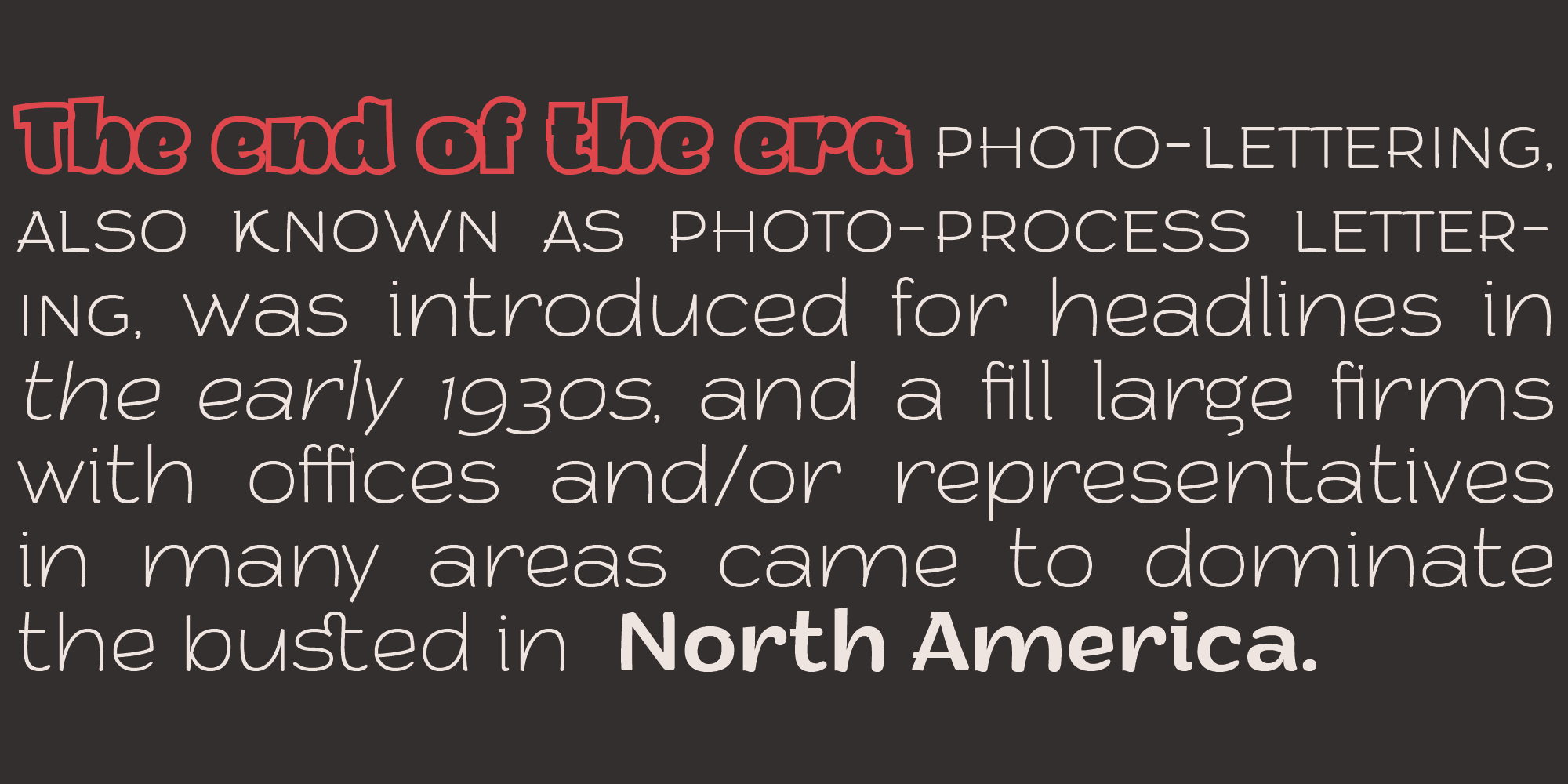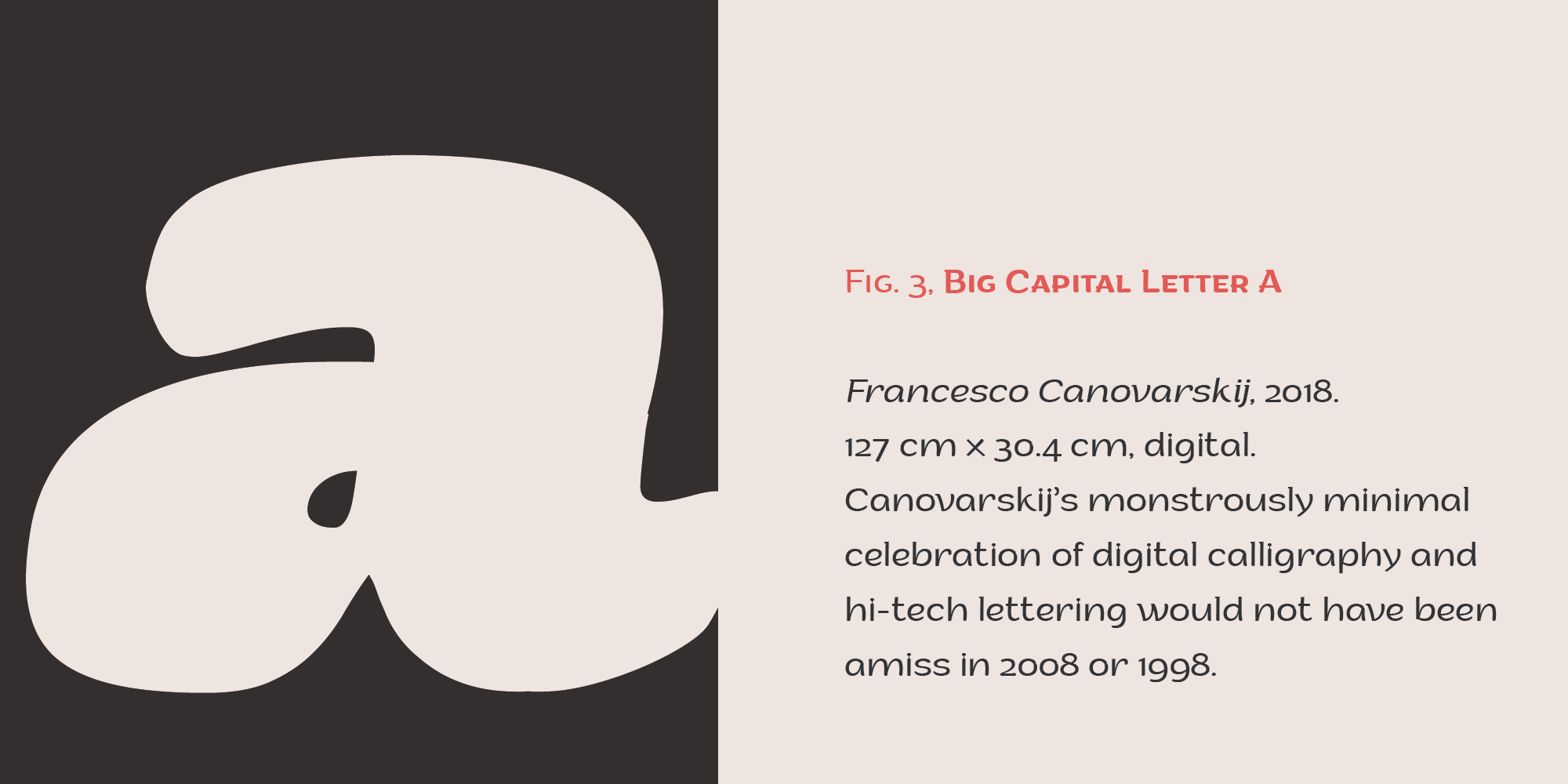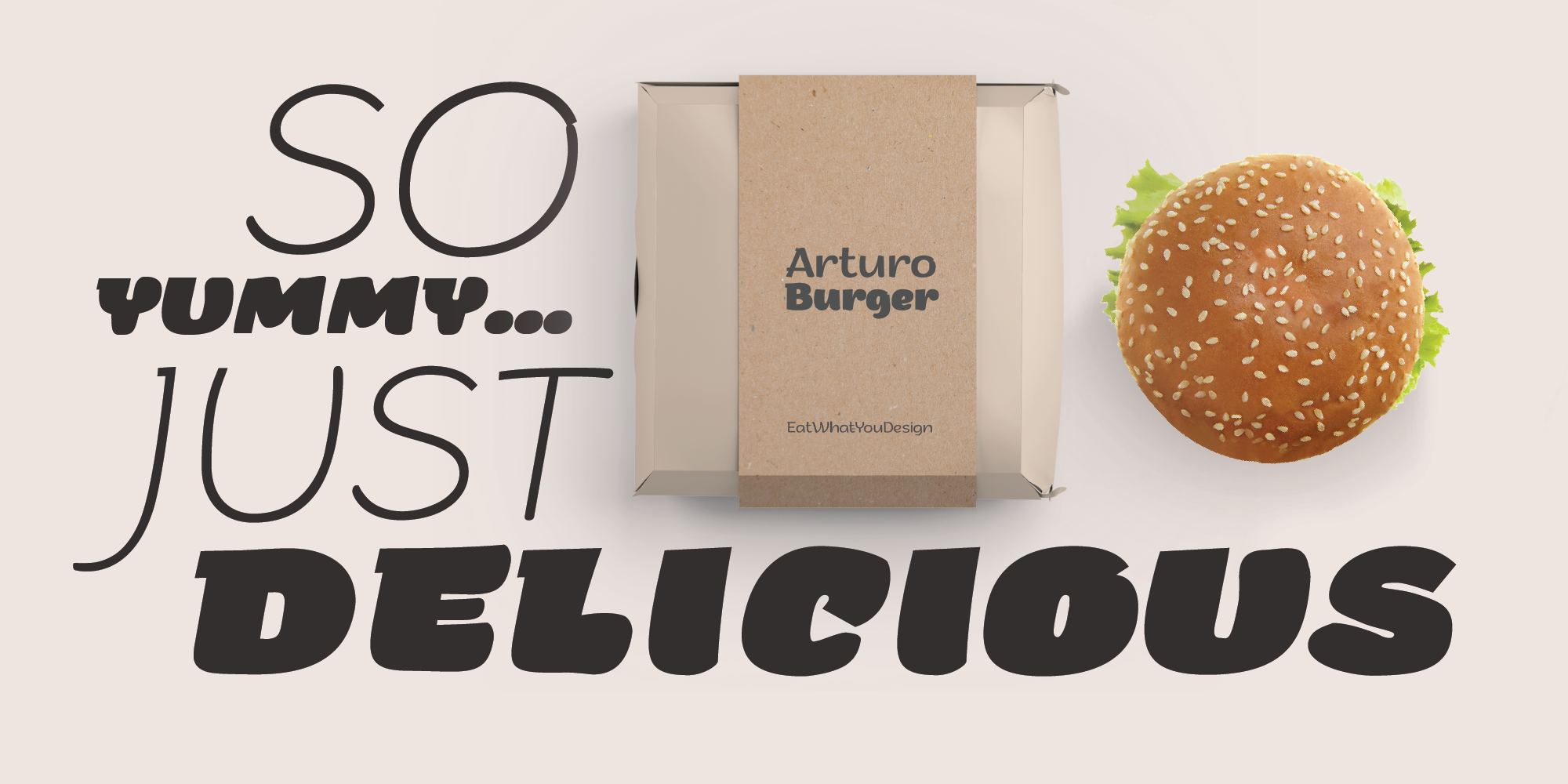Arturo Thin
Arturo Thin italic
Arturo ExtraLight
Arturo ExtraLight italic
Arturo Light
Arturo Light italic
Arturo Regular
Arturo Italic
Arturo Bold
Arturo Bold italic
Arturo ExtraBold
Arturo ExtraBold italic
Arturo Heavy
Arturo Heavy Outline
Arturo Heavy italic
Arturo Heavy Demo
Arturo Heavy Outline Demo
Writing system:
Language Supported:
Features
-
fl fiStandard Ligatures
-
stctDiscretionary Ligatures
-
WagekStylistic Alternates
-
AbagoSmall Capitals
-
ABACOUnicase
-
12/23Fractions
-
1a 3thOrdinals
-
12360Oldstyle Figures
-
1234Tabular Figures
-
H123Denominators
-
H123Superscript
-
H123Scientific Inferiors
-
H123Numerators
-
120Slashed Zero
Variable Typefaces
Variable Preview
Variable fonts are only available with the full family package (and might not be supported by all software)
The European languages are members of the same family. Their separate existence is a myth. For science, music, sport, etc, Europe uses the same vocabulary.
The languages only differ in their grammar, their pronunciation and their most common words. Everyone realizes why a new common language would be desirable: one could refuse to pay expensive translators. To achieve this, it would be necessary to have uniform grammar, pronunciation and more common words. If several languages coalesce, the grammar of the resulting language is more simple and regular than that of the individual languages. The new common language will be more simple and regular than the existing European languages. It will be as simple as Occidental; in fact, it will be Occidental. To an English person, it will seem like simplified English, as a skeptical Cambridge friend of mine told me what Occidental is. The European languages are members of the same family. Their separate existence is a myth. For science, music, sport, etc, Europe uses the same vocabulary. The languages only differ in their grammar, their pronunciation and their most common words. Everyone realizes why a new common language would be desirable: one could refuse to pay expensive translators. To achieve this, it would be necessary to have uniform grammar, pronunciation and more common words. If several languages coalesce, the grammar of the resulting language is more simple and regular than that of the individual languages. The new common language will be more simple and regular than the existing European languages. It will be as simple as Occidental; in fact, it will be Occidental. To an English person, it will seem like simplified English, as a skeptical Cambridge friend of mine told me what Occidental is. The European languages are members of the same family. Their separate existence is a myth. For science, music, sport, etc, Europe uses the same vocabulary.
